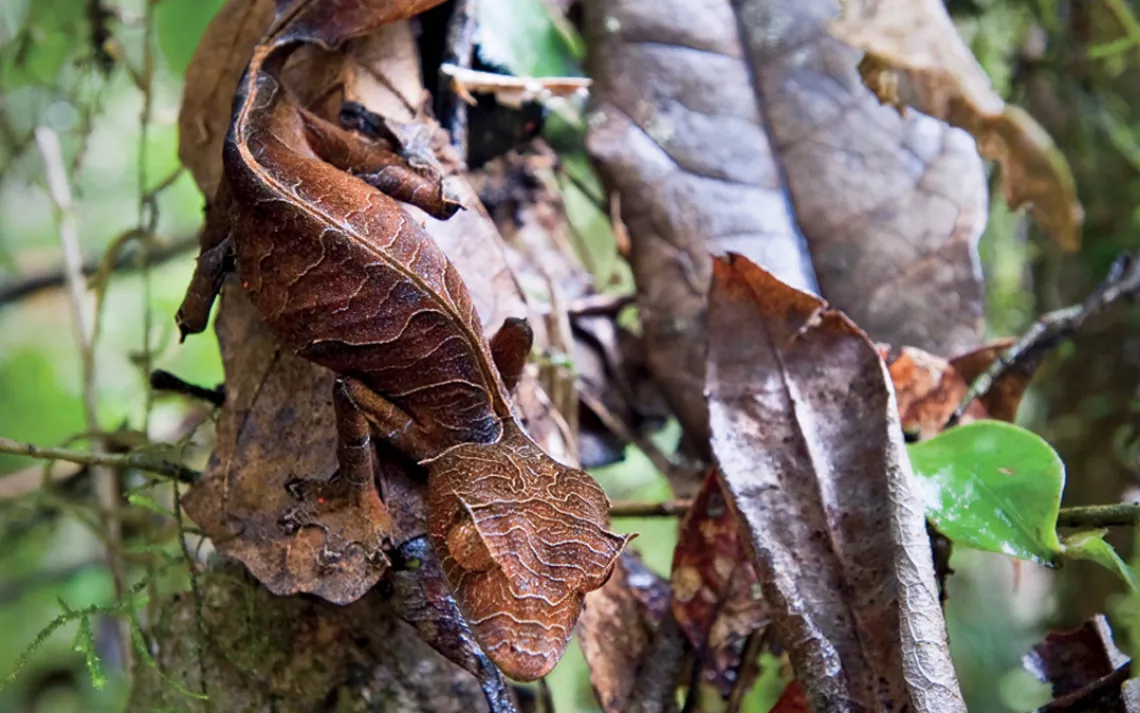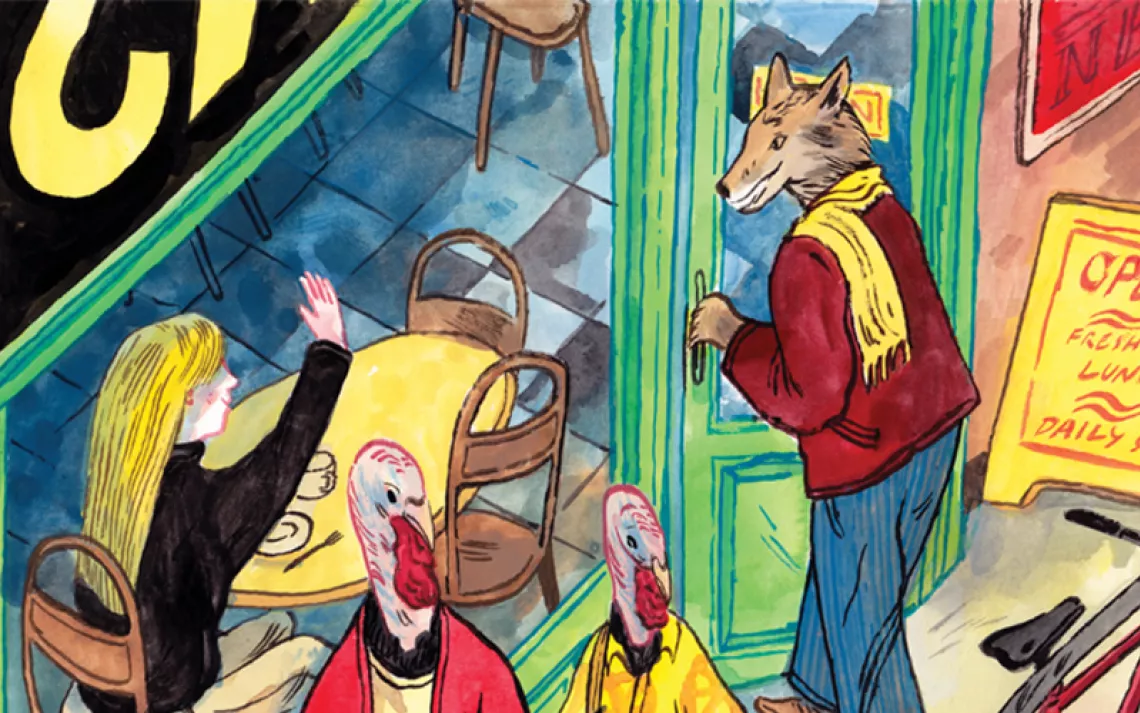Satan Lizard

In Madagascar, the satanic leaf-tailed gecko can hide from predators but not from purveyors of exotic pets. | Photo by Nick Garbutt/Nature Picture Library
When you see a leaf tremble in Madagascar's rainforest, it might not be a leaf at all. Step closer. If the leaf squeaks, flashes its bright-pink mouth and tongue, or stares you down through glowing eyes, you have come face-to-face with the satanic leaf-tailed gecko.
This miniature Smaug has sublime camouflage: Lichenlike markings and a tail that resembles insect-eaten foliage help it blend into the canopy and tree bark. Unlike that of shifty chameleons, the leaf-tailed gecko's coloring changes as it grows—moving through brown, purple, or pink hues that match local tree colors. The reptile's cloak of invisibility allows it to catch insect prey.
Thanks to its sticky toe pads, Uroplatus phantasticus can hang upside down from branches. When threatened, it drops to the ground and scurries into forest litter. As a last resort, the gecko can shed its tail if grabbed by a snake or bird.
But mimicry cannot fool collectors who covet the eccentric-looking, hummingbird-size creature as a pet (and will pay $300 for one). Nor does it protect the gecko from Madagascar's rampant deforestation. The island nation has lost up to half of its primary forest cover since the middle of the 20th century.
 The Magazine of The Sierra Club
The Magazine of The Sierra Club






